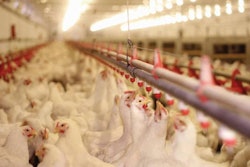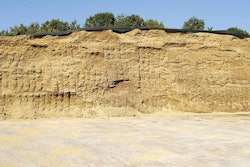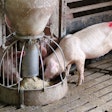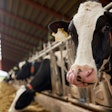
Any feed is only as good as the data used to design it and finding a source of trustworthy feed nutrient specifications is another hurdle that needs to be addressed early on.
Having selected a formulation software and an ingredient database, it is time to formulate some feeds. Now, it is time for another long-term decision, namely the source of dietary specifications.
A very simple example will illustrate the point. All formulas need to have an energy specification; that is, how much energy the feed contains. Let us assume we are making a broiler feed and we have selected AMEn as our energy indicating parameter – this is apparent metabolizable energy corrected for zero nitrogen retention, but this was a decision we had to make as part of the previous course. Now, we need to indicate to the software program how much AMEn our feed must contain. Will this number be 3,000 kcal/kg, more, less, and who is going to be the authority in providing this number? Of course, the same applies to nutrients and all other specifications, but we are using energy as an example here.
Book values can be a starting point
Any good book on poultry nutrition will offer some information on dietary specifications. So, for a broiler feed program composed of a starter, a grower and a finisher feed, this book might indicate 3,000, 3,050, and 3,100 kcal/kg AMEn for the three feeds, respectively. Now, if you look at another book, of an equally authoritative author, these values might be 2,950, 3,050, and 3,200 kcal/kg – and there might be very good reason for that. The same pattern can be observed as the number of sources increase.
We have several options here. First, we can pick the book values we consider most trustworthy, assuming we have enough experience to make this distinction. Second, we can calculate an average based on the most trustworthy sources. Third, we can follow the same source as that we used to establish our ingredient nutrient database. This last option is what most starting feed professionals do as they want to ensure the two sets of values are related as closely as possible. Such is the case of the NRC publications in the U.S., the INRA publications in France, and similar sets of values in other countries. Following a public institution’s values gives some extra authority in our work.
Following a genetic line’s recommendations
In the case of poultry – broilers and layers – the genetics are so uniformly conformed these days that it has become easy enough for nutritionists working for these genetics to develop specific dietary recommendations. This is especially true in the case of energy and amino acids and, in fact, such recommendations may even be based on several valid trials along with considerable field experiences.
When it comes to other nutrients, it is more experience, education and a measure of safety that dictate relevant recommendations. This is particularly evident in the case of vitamins and trace minerals. There is very little, if any, reasoning why one genetic line may require a much higher amount of, say, vitamin B12 compared with another line, even though both specifications are way above minimal requirements. At any rate, beginning with poultry genetic line recommendations is a good starting point that can be used to test different approaches to match final dietary specifications to farm-specific conditions – something we will discuss in another issue. The case is completely different in the case of pigs, ruminants and all other species as their genetic-related dietary nutrient specifications are the best educated guess of several experienced nutritionists. I would not discard them, but I would use them with even less confidence or with a greater enthusiasm to adapt them to my own conditions.
Don’t use templates provided in the formulation program
These are good enough for training, but not for commercial use. Unless, of course, they are based on some trustworthy named source and they are double checked by a well-known nutritionist. And, even then, use them carefully because they will include considerable safety margins, for easily understandable reasons. Experienced nutritionists may use these templates as an easy way to test a new formulation software or to make their own templates. Again, these ready-made templates have their uses, but they are not the final word in the market.
Can you trust private databases?
This is another source of information, inexplicably expensive, and mysteriously sourced. They are as good as the word of the selling person or company and they require a great degree of faith. If you buy the database from an established feed plant, a consultant, or even a private-public institution, make sure you also buy the set that includes the ingredients and nutrient values, because quite often these databases are based on long-term experience involving the interaction of these two databases.
There are two problems here. First, some of these databases are designed to apply to a certain country’s clientele, using specific nutrient terms and ingredients – so they can be quite limited in use and scope. Second, they may not be compatible with other databases. Here, I only need to bring up the example of a large corporation that had to adjust the dietary specifications of their feeds only because they refused to admit their ingredient/nutrient database was wrong in the first place. They were out of sync from the rest of the market, but it worked for them.
Requirements versus specifications
Nutrient requirements are what animals need to perform. Dietary specifications are what feeds contain in relation to the same nutrients in order to meet these requirements.
If a feed formula is designed to contain, say, 1.5% lysine, this does not mean the animal will actually receive a feed with 1.5% lysine. There are many additional steps from feed design on the paper (or the screen) until that design is delivered to the animal in the form of a feed. Hence, the difference in terminology.
The gap is what we call “safety margins” and this will be the topic of another discussion.

















